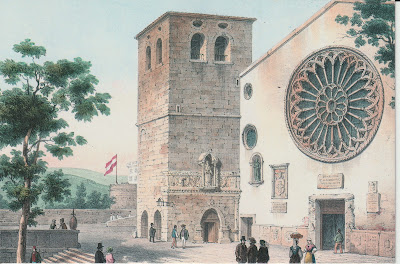Bronze statue of Ii Kamonnokami, Japanese statesman
This is an unused color-tinted postcard printed in Japan. The blurb is found at the upper right corner on the front of the card and reads in English and Japanese: “The bronze statue of Ii-Kamonnokami the famous statesman served for the opening the Port of Yokohama, rested on Mt. Kamon, Yokohama. The card was found in a jumble box at a local antique mall.
Ii Naosuke (Kamonnokami) was born in 1815 and assassinated in 1860. He held the position of Tokugawa shogunate, Japan, from 1858 until his death in 1860. Most famous for signing the Harris Treaty with the United States that granted access to ports for trade with American merchants and seamen, he was also an accomplished practitioner of the Japanese tea ceremony. At least two of his written works were about the tea ceremony.
Ii was the youngest of 14 sons and not in line for a prominent position. As a result, he was sent at an early age to a Buddhist temple where he lived on a small stipend from his family. All 13 of his elder brothers either were adopted into other families that needed an heir or died before their father. When his father died in 1850, Ii was called back from the monastery and reclaimed the Ii name. He then became eligible for a position in the bakufu, council of the shogun’s advistors. He became involved in politics and rose in power. He alienated many reformists and ended up being assassinated by a group of Satsuma samurai on March 24, 1860.
The Treaty of Amity and Commerce of 1858 allowed the formal opening of Yokohama for foreign trade in 1859. The port was a center for silk exports.
The park where the statue is located on a hill in the city of Yokohama. Although the statue was removed by the government’s metal recovery instructions in 1954, the city of Yokohama rebuilt it for the 100th anniversary of the opening of the country. There were about 200 cherry trees planted in the park in 1996.
For additional information, see:
https://en.wikipedia.org/wiki/Ii_Naosuke
https://en.wikipedia.org/wiki/Kamonyama_Park
https://en.wikipedia.org/wiki/Port_of_Yokohama
https://www.tota.world/article/339/










